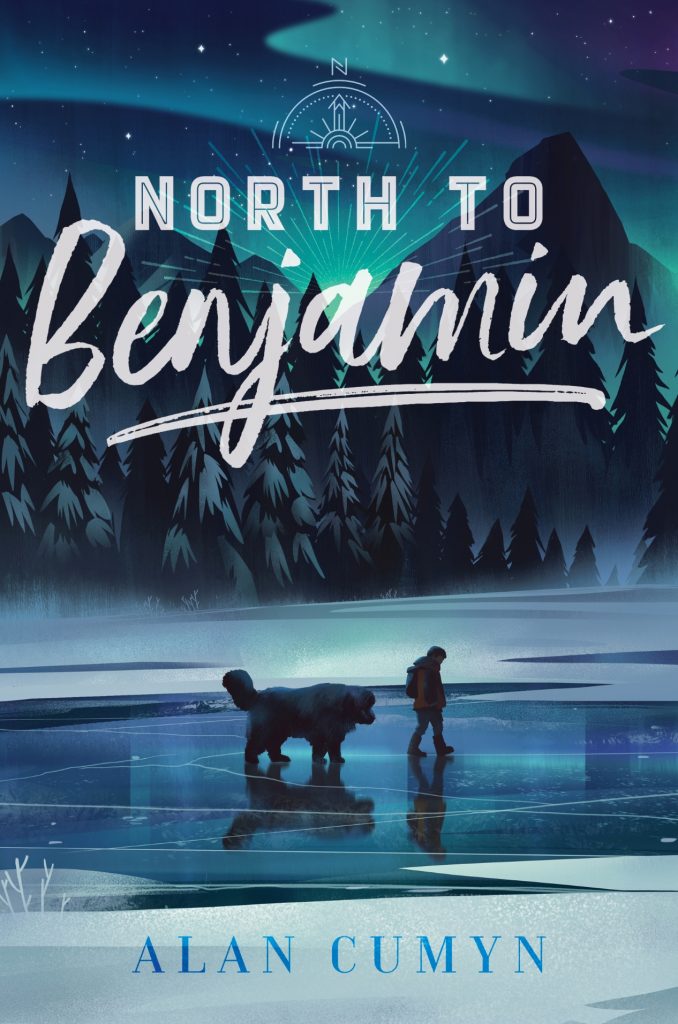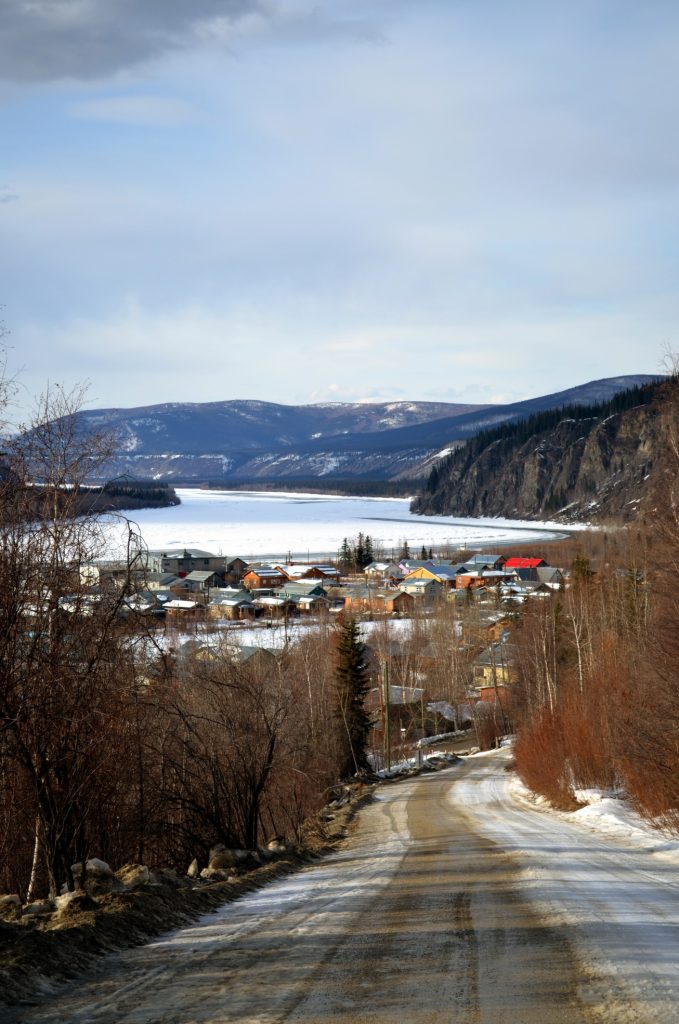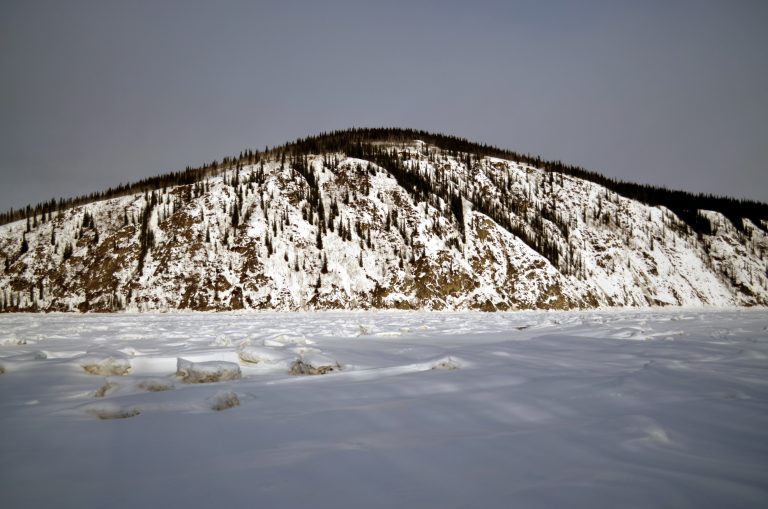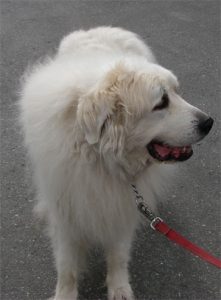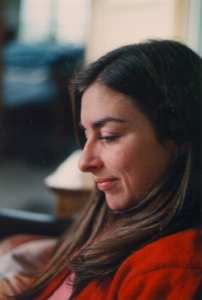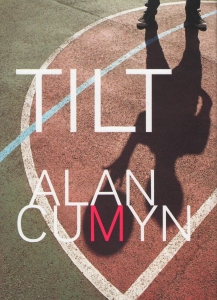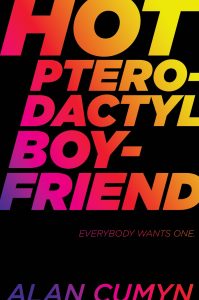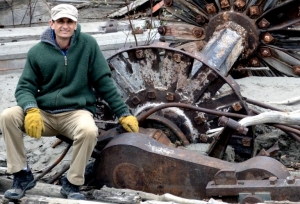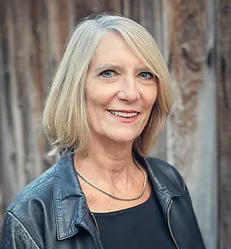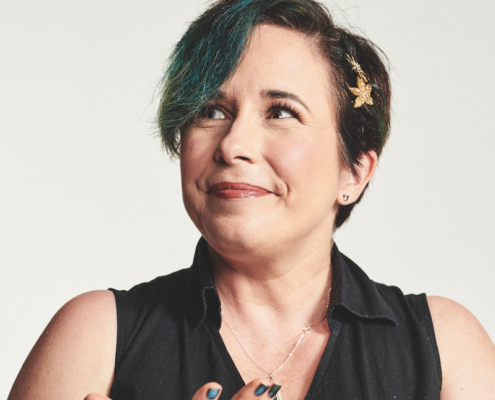NORTH TO BENJAMIN by Faculty Alan Cumyn
On December 4th, 2018, VCFA Faculty member Alan Cumyn published North to Benjamin, a novel for middle grade readers.
“Hatchet meets Maybe a Fox in this piercing novel about Edgar, a boy who has lost the ability to speak and can only bark, and his dog Benjamin as they travel through the freezing Yukon wilderness in order to stop Edgar’s mother from making a huge mistake.
Hi Alan. Welcome to Wild Things! North to Benjamin travels through a wide swath of landscape, as well as huge challenges for a young boy growing up in a very unstable home environment. Can you tell us what was the spark that ignited this book?
In the spring of 2014 my wife Suzanne Evans and I went to Dawson City, Yukon. I had been chosen to be the Berton House writer-in-residence for three months, sponsored by the Writers’ Trust of Canada. Dawson is an eccentric frontier town in the far north famous for the 1898 gold rush about which much has been written, most famously by Jack London, Robert W. Service and Canadian historical writer Pierre Berton, whose childhood home is now the residency site.
I grew up on stories of old-timers freezing to death in the pursuit of gold, and of the astonishing beauty of the landscape where the Klondike and the Yukon rivers meet. While in Dawson, I was finishing up a wild novel of a different sort, Hot Pterodactyl Boyfriend, but I was also taking notes for a possible novel set in Dawson. I imagined a troubled woman travelling north to escape big city life, and to escape herself, essentially. As an experiment, I wrote several chapters using our own experiences of getting to know Dawson – arriving at the airport; getting used to the new house; meeting locals; taking in the social life of the town and, mainly, walking, walking, walking everywhere, in town and on the trails that so quickly lead one into the wilderness. I loved the landscape, took a camera everywhere I went, and tried to record my thoughts and feelings.
About my main character I was not so sure – something was not igniting on the page, but I kept at it. After getting home, and after returning to teach at a Vermont College of Fine Arts residency, it occurred to me that I was centering the book around the wrong character – that the troubled woman I had imagined is actually the mother of the main character, her young son Edgar, who knows her almost better than she knows herself, and who suffers for her troubles and figures out ways to adapt to the changing circumstances of life up north. So in a way it was a series of sparks – the extraordinary opportunity of going north in the first place; the work I did in Dawson in trying to make the most of my time there; and then the time away at VCFA when the project came into its strongest focus through the personality of young Edgar, a quiet and thoughtful boy who is vulnerable to the struggles and weaknesses of the adults around him.
Who was your favourite character to write and why?
Once Edgar came into focus, I enjoyed imagining and creating all the characters around him, but especially Benjamin, the elderly Newfoundland dog who becomes Edgar’s friend, mentor, and substitute parent. I felt it in my bones that Edgar and Benjamin would be able to talk with each other. But how would Benjamin speak, exactly? What sorts of things would he say? I modelled the dog after a friend’s aged Great Pyrenees named Baird who was big, smelly, intensely friendly but also irritable in the way of the elderly for whom moving around painlessly is no longer to be taken for granted.
So Benjamin expresses himself in short, sometimes acerbic bursts. He also suits himself first – goes on the trails he wants to go on; heads home whenever he’s ready; becomes irritated when the boy is excessively energetic or does stupidly dangerous things, like baiting a bear, and worse. Still, Benjamin knows his responsibility is to keep Edgar safe despite himself, and his actions speak larger than his words. He will be cowardly if it suits his purpose, but he also will risk his own life if need be. For a talking dog, he leaves a lot unsaid, and that was part of the pleasure of writing him.
Tell us about something special you keep on your desk/wall as you work.
My office tends towards clutter as I get involved in too many projects and have stacks of books and papers that need attention. My walls in particular used to be completely packed with family photos, certificates, mounted book jackets and the like. But some years ago I cleaned everything out in a renovation and started afresh. Right now on my wall behind and above my computer screen I have a favorite photo of Suzanne in a contemplative mood during our honeymoon year in 1986 when we went to China to teach.
I also have a Royal Shakespeare Company tea towel given to me by then graduating student Jan Lower which shows the London tube map reimagined as “Greater Shakespeare” with intersecting lines in yellow (Fools), aquamarine (Strong & Difficult Women), dark blue (Heroes), light blue (Villains), green (Fathers & Daughters), pink (Mothers), and red (Lovers). All along the lines are characters imagined as tube station names. So the Romeo & Juliet station marks either the beginning or the end of the Peak Hour Lovers line; the Richard III station is prominent on the Villains line and offers disabled access; and Riverboat Service is offered at the Ophelia station (Father’s & Daughters). I should also say, in service to honesty, that the Greater Shakespeare tea towel covers the worst of the errors I made in trying to redo that wall myself after boarding over the original plaster. At some point – another project! – I will take everything down and try again.
How does teaching at VCFA affect your writing life?
My last three novels for young readers have all been directly inspired by events at VCFA residencies. Tilt, my young adult novel that is mostly about being a 16-year-old male, came about because of Louise Hawes’ famous July 2008 lecture on the line of desire – how we need to know near the beginning what the main character wants, and why she can’t get it. At the end of that lecture, Louise had us all write a letter to ourselves at a younger age, knowing what we know now. I imagined myself playing a game of one-on-one basketball with my 16-year-old self before being able to sit down and talk honestly with each other. What came to me then was a powerful feeling of the contradictions and ambiguities of that age, and in particular the hormonally-charged onslaught of sexual feelings with what felt like no social or emotional outlets available.
A few years later, visiting author Libba Bray instructed her audience, at least three times in the space of an hour, to not go writing “your hot pterodactyl boyfriend novel” – a brilliantly original way of saying don’t go following the trends. But that phrase brought all kinds of ideas to mind for me, and, with her blessing, I wrote Hot Pterodactyl Boyfriend about the ultimate bad boy boyfriend who is also emblematic of how unconscious desires can drive our lives.
North to Benjamin also came about because of my participation in a VCFA residency that got me thinking again about how the stakes for child characters are so often higher than with adults, and how hope can be even more powerful and possible. Beyond the direct help with these particular projects, however, the teaching gives me a chance to give back to others and get my head out of my own writing for a time while still sharpening my analytical tools. I’ve lost track of how many times I have mentioned particular problems to students concerning their work, only to later look at my own manuscripts and realize I ought to be following my own advice! It’s a privilege to be part of such a writing hothouse, full of fascinating people, to give what I can and to get so much in return.
What advice would you give to a prospective VCFA student?
There are too many things one could say, but I’ll focus on something that I do say to everyone when I think of it: in dealing with the overwhelming advice that can come from advisors, other students, family members etc., even as a student you have to remain captain of your own ship. You are the one responsible for this piece of writing. You are the one who knows best your own feelings, the emotions of your characters, the wellspring of inspiration, the territory you want to cover, where the project needs to go. As captain you want to take into account the best advice of those around you, but ultimately you’re the one steering the craft. You’re also the one doing the learning, and a program like VCFA only works as far as you are able to take responsibility for fashioning your own progress, designing your own program. There might be occasional directed assignments, but a lot of the work comes as you grapple with what you are interested in, what you are passionate about, what you realize you must work on. So do the hard work of figuring out what that is, that thing in your heart that is most definitely yours and that needs to come out. That’s easy to say, difficult to do, and for many of us remains an ongoing struggle the more we write, but there it is. What book does the world need from you now that is in you to write?
Great advice for all writers, Alan. Thanks so much for sharing your writing process and your perspective on writing with us today.
Alan Cumyn is the author of wide-ranging and often wildly different literary novels for children, young adults and adults. A two-time winner of the Ottawa Book Award, he has also had work shortlisted for the Governor General’s Award, the Giller Prize, and the Trillium Award. He teaches at Vermont College of Fine Arts, where he is a past chair, and he is also a past chair of The Writers’ Union of Canada. In 2016 he received the Writers’ Trust of Canada’s Vicky Metcalf Award for body of work for young people. He lives in Ottawa, Canada.
North to Benjamin is published by Caitlyn Dlouhy Books/Atheneum, December 4, 2018

